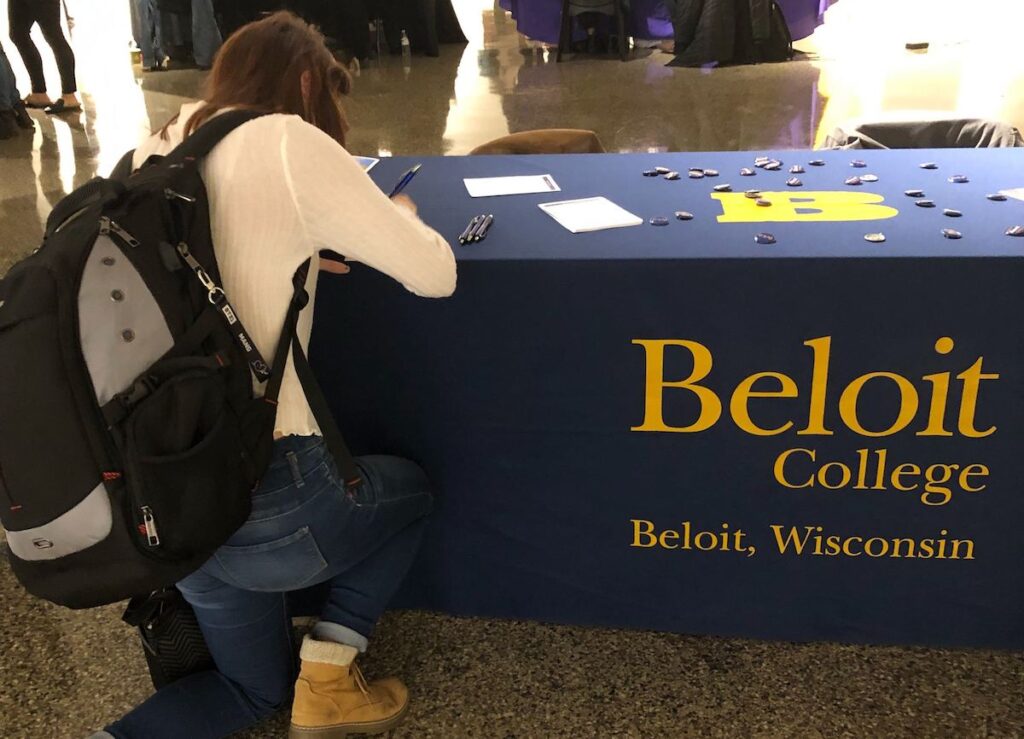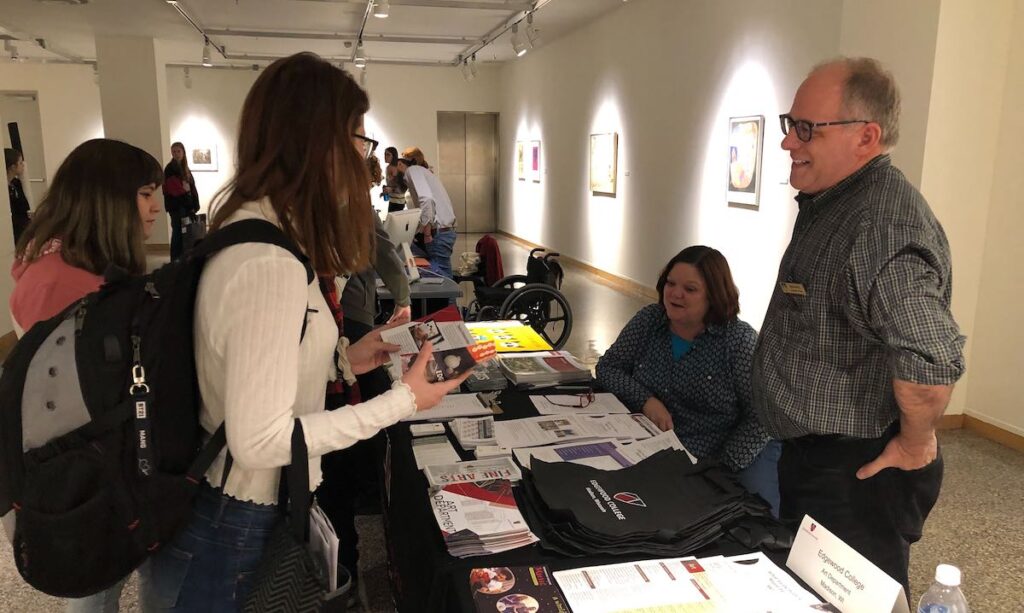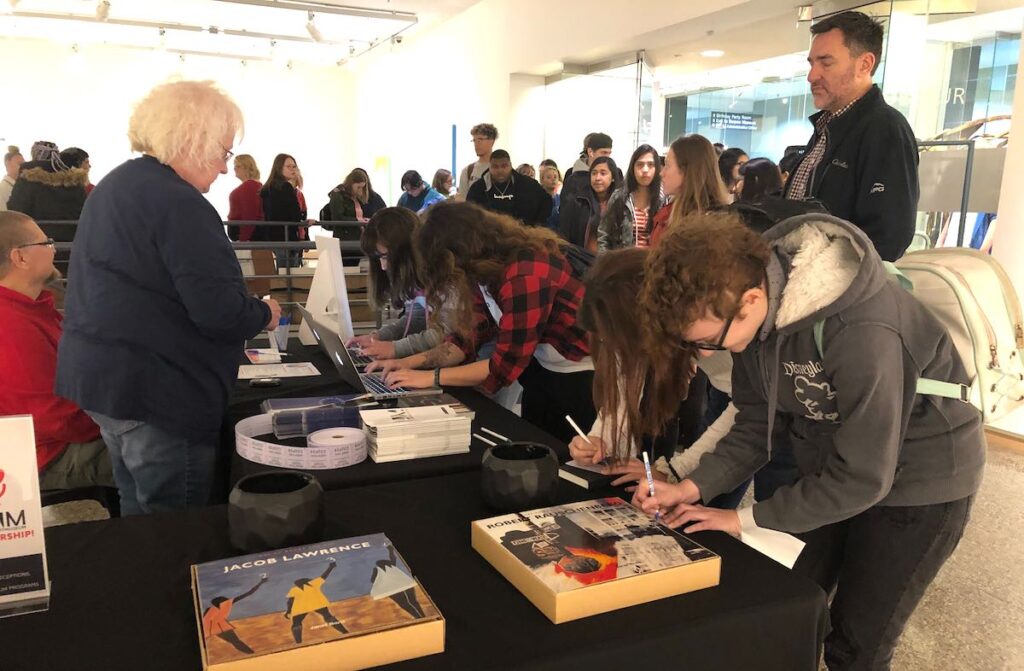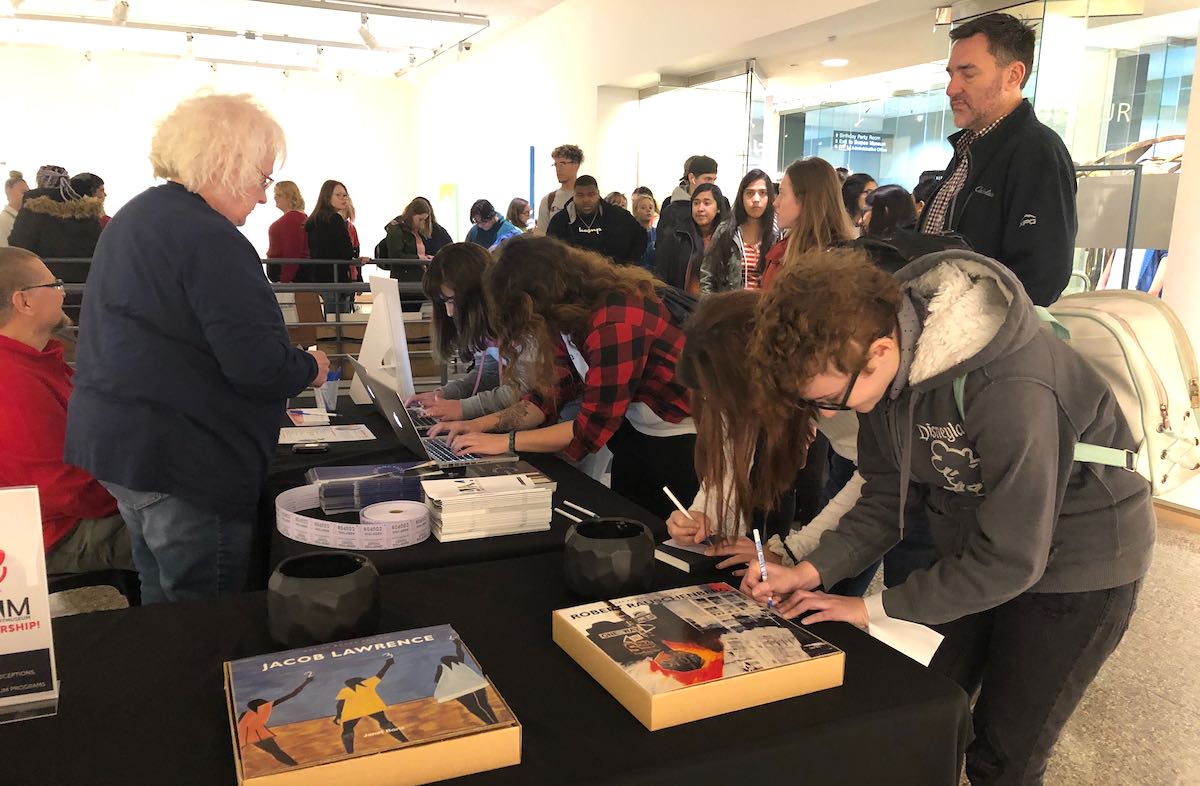Artist portfolios are essential for students who plan to pursue a career in the arts. College and scholarship applications will often have a portfolio component, and as their art teacher, you can help best prepare students for this process.
Each application may be different, but in general, you will want to prepare your students to keep a record of observational works, media-focused projects, experimental artwork, and series of work, as well as their sketchbook and any other documentation of their creative process.
Here are three ways to help create better artist portfolios:
1. Keep up-to-date on college requirements
Take a look at area colleges, universities, and art schools. Find out what their portfolio application requirements are. Although you will want to encourage students to research the specific requirements for the school they’re applying to; it’s a good idea to have a general understanding of what’s common in your area.

Keep application information and materials visible in your classroom. Post a list of typical items to remind students as they create work throughout the year. When they’re struggling to come up with ideas for a project, ask them if there’s anything missing or lacking in their portfolio. If they don’t feel like their series of work is very strong, it may be time to revisit that in a new way to create art, they can submit confidently.
For example, the School of the Art Institute of Chicago has the following requirements for their application:
- Show us 10–15 of your best and most recent works.
- Use your portfolio to showcase your interests, skills, and creative potential.
- You may show us work created across media or focus entirely in one medium.
- Work can range from observational to abstract.
- We have no media-specific limitations, nor do we present portfolio assignments.
This is information you could have posted in your classroom, along with informational flyers and materials from colleges and universities. As students express an interest in studying art after high school, you can refer them to this area and help them find a program that’s right for their interests.
2. Incorporate the same guidelines for classroom submissions
As art educators, our role is to best prepare students for the future. If that involves a post-secondary career in the arts, you will need to prepare students to build and maintain a strong portfolio. One of the best ways to prepare students is by establishing routines, providing opportunities to practice, and giving meaningful feedback.
Now that you have reviewed the area school’s submission requirements, you can tailor your classroom submissions to act similarly. Get your students in the habit of keeping a record of their work. At the end of the quarter or semester, instead of students turning in individual projects, ask them to submit an artist portfolio. Give them a list of classwork, projects, and sketches you expect to see at the end of the term. Hold them accountable for keeping track of their artwork and organizing it for submission.

Encourage students to keep in mind the order, titles, and description of their work. They should be able to organize the portfolio and be ready to articulate how and why it was created both verbally and in writing. Ask students to look for similarities in concepts, themes, formal qualities, etc. between different pieces when deciding on how to order the work inside their portfolios.
Help your students craft a strong artist statement to include with their portfolio. They should write about why they are passionate about making art, explain what is in their collection, and describe how they find inspiration for their work.
There are sure to be mistakes and headaches at first, but once you establish this as routine, students can begin to select and organize their best work for your class and beyond.
3. Locate the nearest national portfolio day event in your area
National Portfolio Days are hosted all over the country and are great opportunities for students to get some legitimate feedback on their portfolios from actual colleges, universities, and art schools. These events are held in the fall. Look for information at your area art museums and colleges to plan ahead.
At the event, students will have the opportunity to talk to schools they are interested in and discover new ones that may fit their career goals. The school representatives can answer specific questions your students may have about admittance, scholarships, and financial aid.

Many of these events also offer opportunities for students to take art workshops, hear from presenters, and network with other high school artists. Students can discover what a college art course may be like, hear from contemporary artists on their experience through schooling, and meet other students who have similar interests in programs and schools.
Make this a priority for your junior and senior students who are interested in pursuing a career in the arts. Talk to your school administration and arrange a field trip for this unique opportunity. If your school is not supportive of the idea, and you can’t make it happen, at least make your students aware of the opportunity so they might seek it out on their own.
Learn more with Readying Students for College and Careers PRO Learning Pack.
Final Thoughts
Many K-12 art educators have gone through the portfolio process themselves once before. Chances are, the process has changed from what schools are looking for to how the portfolio is submitted. Familiarize yourself with the best current practices to help you best meet the needs of your students. You already know how awesome and creative each of your students can be, but now you need to help them showcase those skills through a strong portfolio. Get them in the habit of collecting, organizing, and talking about their work. Provide them with information and, if possible, face-to-face experience with college representatives at events like National Portfolio Day.
As students reach graduation, you want to send them off feeling confident and ready for the next chapter in their artistic careers. By helping students create strong portfolios, they’ll be off to a great start!
What advice do you give your students when organizing their portfolios?
How do you guide students in choosing a post-secondary art program?
How do students submit portfolios in your classroom?
Magazine articles and podcasts are opinions of professional education contributors and do not necessarily represent the position of the Art of Education University (AOEU) or its academic offerings. Contributors use terms in the way they are most often talked about in the scope of their educational experiences.





